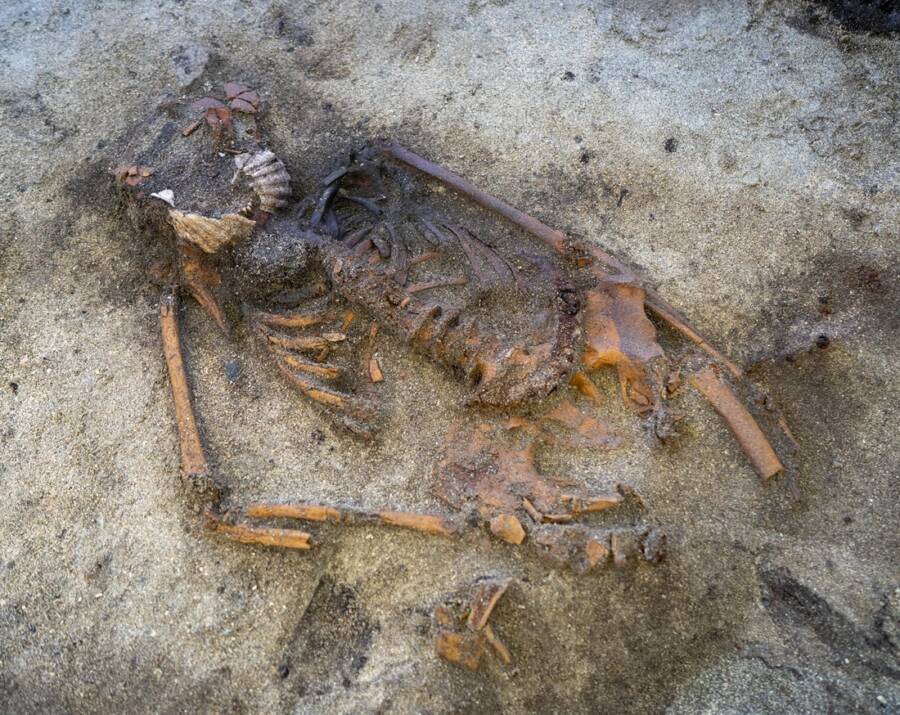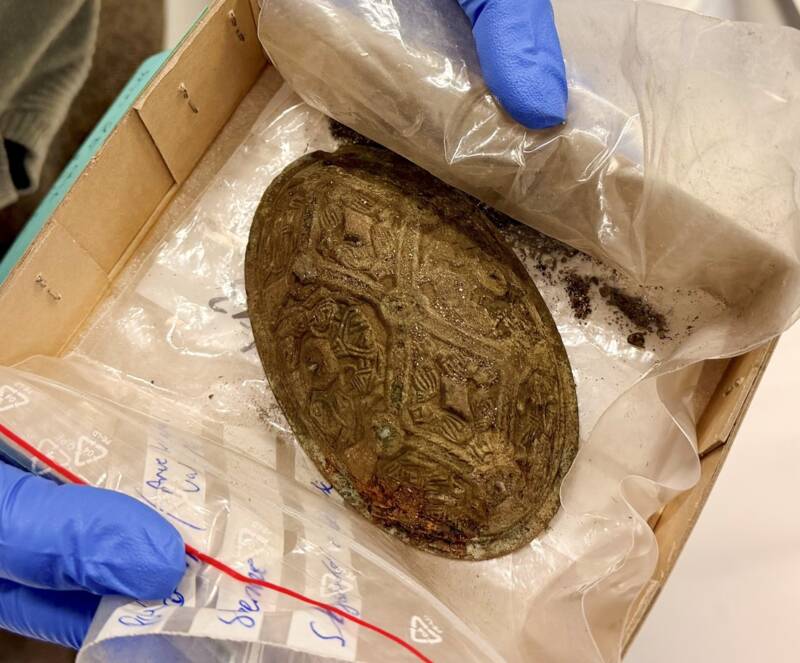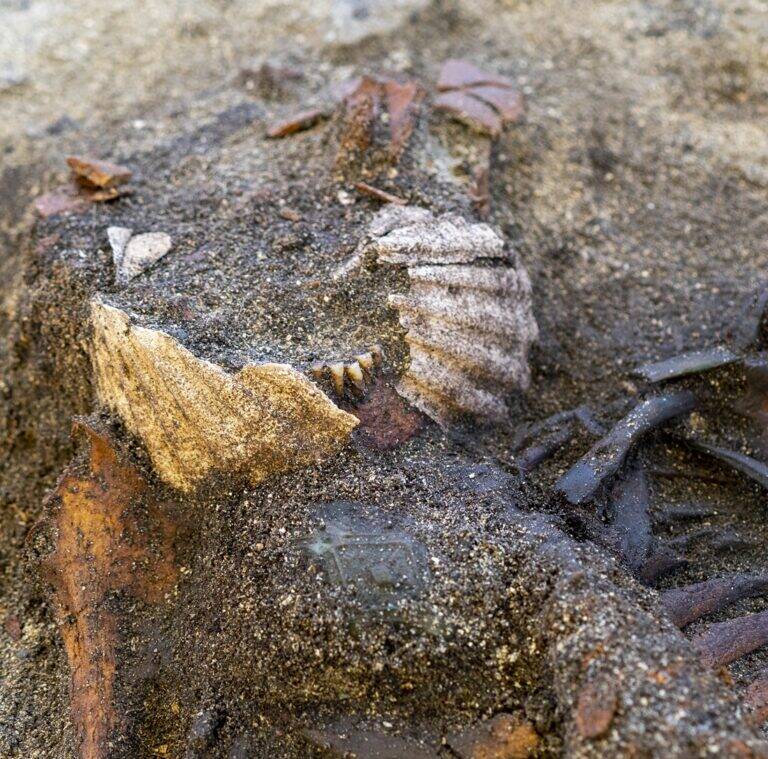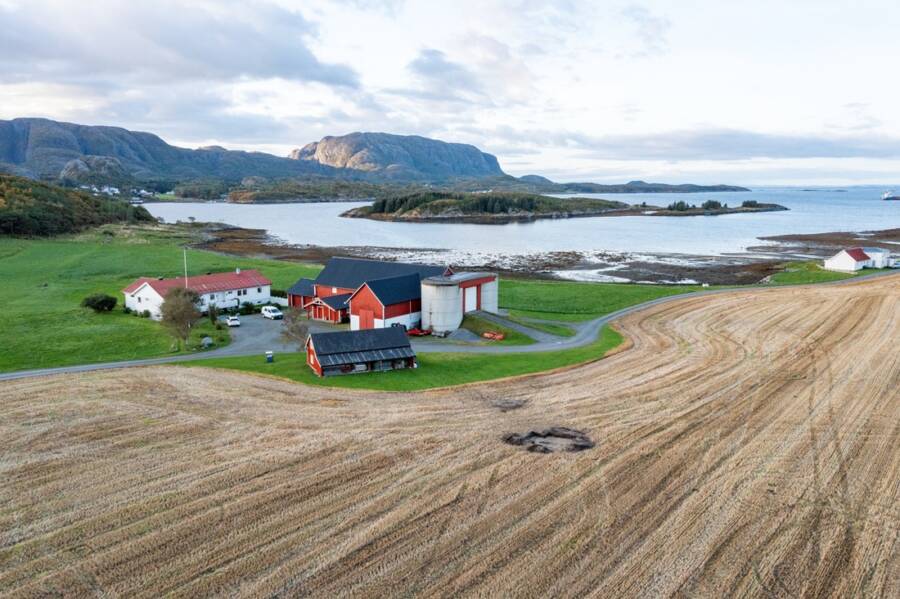Discovered just eight inches beneath a working farm in the village of Bjugn, this unprecedented Viking burial has left archaeologists baffled — all the more so because she was surrounded by bird bones.

Raymond Sauvage/NTNU Science MuseumThe discovery of the woman buried with scallops on her mouth is certainly unusual — and researchers still aren’t sure what these shells mean.
While recently sweeping his metal detector across the ground in Trøndelag, Norway, hobby detectorist Roy Søreng got a hit. He found a buckle — which soon helped lead archaeologists to the 1,200-year-old grave of a Viking woman.
But this one was unlike any grave that they had ever encountered before: The woman was carefully laid to rest with scallop shells placed atop her mouth.
For now, researchers aren’t sure what the placement of the shells could mean. But this find is nevertheless an exciting one, especially since the grave was detected just before plowing that could have destroyed it forever.
The Discovery Of A Viking Woman Buried With Scallop Shells Over Her Face
According to a press release from the research organization Sintef and the Norwegian University of Science and Technology (NTNU), the discovery of the Viking woman’s grave came by chance. It was found after metal detectorist Roy Søreng notified archaeologists that he’d discovered an ornate bowl buckle while treasure hunting at a farm in the village of Bjugn in Norway’s Trøndelag County.

Raymond Sauvage/NTNU Science MuseumThe bowl buckle found by the metal detectorist, which helped archaeologists discover the Viking woman’s grave.
Archaeologists quickly came to investigate the site, where they happened to have found another Viking grave earlier in the year. Thanks to cooperation from the landowner, who agreed not to move ahead with potentially destructive plowing, they were able to investigate the area where Søreng had found the buckle. And there they found this site’s second Viking grave.
But this grave was unusual.
In some ways, it bore similarities to other known Viking graves. Archaeologists found that a Viking woman had been buried there, wearing “typical Viking Age clothing and jewelry” of the 9th century, including “two oval cup buckles” which once attached to the halter of a dress as well as “a small ring buckle” that secured the neckline of a petticoat. Archaeologists believe that she was probably a housewife married to a farmer.
What caught the archaeologists’ attention, however, was that the Viking woman had been buried with two large scallop shells placed over her face. The scallop shells had been carefully positioned with the curved sides out, so that they partially covered the woman’s mouth. They also found a number of bird bones in the grave, seemingly taken from the wings.

Raymond Sauvage/NTNU Science MuseumA closer look at the scallop shells on the Viking woman’s face, carefully positioned to partially cover her mouth.
“The most striking thing is two scallops placed at the mouth of the deceased,” Raymond Sauvage of the Department of Archaeology and Cultural History at the NTNU Science Museum stated in the press release. “This is a practice that is not previously known from pre-Christian graves in Norway. We do not yet know what the symbolism means.”
Remaining Questions About The Viking Woman Found With Shells On Her Mouth
For now, many questions remain about the Viking woman buried in Trøndelag. Archaeologists aren’t sure what the scallop shells mean, though experts do know that such shells were thought to represent life and death in the Roman era, and were likely a symbol of pilgrimage linked to St. James during the Middle Ages.

Kristoffer Rantala/NTNU Science MuseumThe farm in Trøndelag, Norway where the Viking woman buried with scallop shells on her mouth was found.
But while it’s difficult to determine what these shells may have meant for the Vikings — or at least for this Viking — archaeologists are eager to learn more.
“We will examine the skeleton, preserve the objects and take samples for dating and DNA analysis,” Sauvage explained.
Not only are researchers hopeful to learn more about this Viking woman buried with scallop shells, but they’re also curious to see if she was related to the other Viking who had previously been found right nearby, interred “one to three generations” before the newly-found woman, sometime in the eighth century C.E.
Such analyses may provide more answers about who the woman was, her physical characteristics, and if she suffered from any diseases. But answers about the meaning behind the scallop shells placed carefully over her face remain elusive.
After reading about the Viking woman who was mysteriously buried with scallop shells covering her face, discover the thrilling stories of some of the most famous Vikings to ever live. Then, see why historians suspect that Viking helmets didn’t actually have horns.





